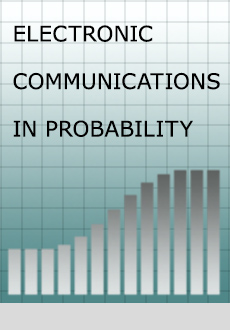Abstract
It has been proved by Bovier & Hartung [Elect. J. Probab. 19 (2014)] that the maximum of a variable-speed branching Brownian motion (BBM) in the weak correlation regime converges to a randomly shifted Gumbel distribution. The random shift is given by the almost sure limit of McKean’s martingale, and captures the early evolution of the system. In the Bovier-Hartung extremal process, McKean’s martingale thus plays a role which parallels that of the derivative martingale in the classical BBM. In this note, we provide an alternative interpretation of McKean’s martingale in terms of a law of large numbers for high-points of BBM, i.e. particles which lie at a macroscopic distance from the edge. At such scales, ‘McKean-like martingales’ are naturally expected to arise in all models belonging to the BBM-universality class.
Citation
Constantin Glenz. Nicola Kistler. Marius A. Schmidt. "High points of branching Brownian motion and McKean’s Martingale in the Bovier-Hartung extremal process." Electron. Commun. Probab. 23 1 - 12, 2018. https://doi.org/10.1214/18-ECP187
Information





